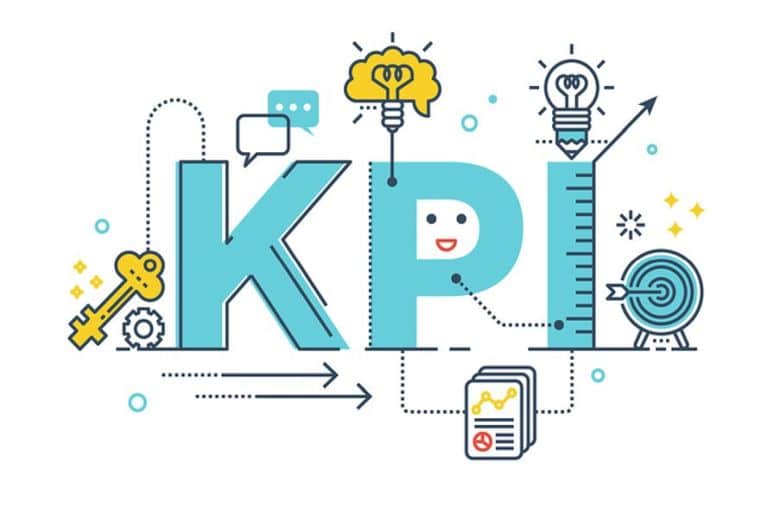Behind every successful business, there are efficient and effective contracts. Contracts are the means by which we do business, regardless of what specific goods or service your organization is providing. Every company needs a well-structured contract process in order to truly maximize its potential revenue and reputation. When getting a handle on your contract lifecycle, you must keep in mind the KPIs that matter most to your organization. In this article, we will examine numerous contract management KPIs so you can start determining which are the most important to your business’s contracts.
What is a Contract KPI?
For those who are unfamiliar, a KPI, or key performance indicator, helps to gauge the success of a contract in a measurable way. KPIs can also be referred to as SMART goals because they should be specific, measurable, attainable, relevant, and time-based. Contract management key performance indicators help assess how quickly and effectively the contract lifecycle is going for all parties involved.
How to Measure Contract KPI
Due to the variability between industries, contracts, and processes, it’s hard to say what to focus on when creating a contract KPI. However, the difficulty of the task shouldn’t dissuade you from reviewing contract lifecycle management and coming up with metrics for success.
An important aspect of setting a KPI includes regular analysis of your data to ensure that goals are on track. Here are a few things that your contract management key performance indicators should include:
- Contract value. This KPI measures how well your contracts are performing overall to add value to your company.
- Contract risk. This KPI includes anything that may potentially go wrong throughout the contracting process, from drafting to negotiation to signing.
- Contract efficiency. When we talk about efficiency, we’re talking about the speed at which the contract lifecycle happens. More on that below.
Most Common KPIs for Contracts
As we discussed earlier, the most common KPIs are value, risk, and efficiency. In the sections below, we’ll discuss each of these in more detail.
1. Contract Value
You can measure how effective your contracts are by keeping track of how many contracts you have. The data can be segmented to provide you with even more insight. Here are some of the ways you can track your number of contracts:
- By vendor
- By client
- By industry
- By location
- By any other metric you wish
You can also score your contracts to gain better insight into how effective they are. An easy way to do this is to write down ideal characteristics of a contract and then go through your contracts to find out how many of them meet the criteria. For example, if you have 10 data points you’re looking for, you can then score each contract on a scale of 1-10.
One of the ways you can measure the value of a contract is to find out how often contracts are being renewed. If you find that renewable contracts are often going unrenewed, that may be an indicator that something needs to change in your contract lifecycle.
Annualized contract value (ACV) is another way to measure the value of your recurring contracts. If your business has lots of high-volume, long-term agreements that are being automatically renewed, this is especially informative. You can also use this metric to compare the revenues of your new contracts to your recurring ones and evaluate how much revenue is lost when contracts don’t renew.
On that note, you can also look at historical contract trends in order to formulate a contract strategy that takes everything into account, creating more effective contracts. Find out what worked and keep doing it, or discover what doesn’t work and readjust your strategy.
Looking at the performance of your contractual obligations will prevent you from missing important deadlines during the course of your contract. Missing deadlines can result in penalties, fines, or accidental duplicate payments – all things that you want to avoid at all costs.
2. Contract Risk
Risk is inherent in any contract, but the role of legal teams is to mitigate as much risk as possible in order to increase compliance and minimize costs. Read on for some ways to do that.
When clauses and contract terms vary across contracts of the same type, it’s a risk for all involved – especially if there are unauthorized edits and contracts that aren’t fully executed. When your contracts don’t feature standardized clauses and terms, they become less efficient and make your contract lifecycles drag on and on.
By using contract management software, you can have a birds-eye-view of compliance and get alerts when contracts deviate from the norm.
If your business has lots of contract-management policies, you can use integrations for electronic signatures and contract approval to increase process visibility while ensuring that your organization remains compliant with the necessary terms and conditions.
Having multiple contracts that don’t renew is a red flag that something is wrong. With CLM software, you can get automated reminders of contract renewal and expiration dates so you won’t miss important renewal dates. This can save your organization quite a bit of money, in addition to saving you the time it would take to manually track contract renewals.
Another way to mitigate risk is to keep track of how many complaints have been resolved for each contract. Not only is this a good way to keep your finger on the pulse of each contract, but it’s a great opportunity for you to improve your company’s processes.
3. Contract Efficiency
You’ve likely heard the tired saying that “Time is money” in the business world. Cliche as it may sound, this phrase rings true, especially when talking about contracts. An efficient contract should be one that both accomplishes the necessary goals for the agreement and mitigates potential risks without overly extending the contract timeline. After all, nothing kills a potential deal faster than months of back and forth negotiating where very little is accomplished at each exchange.
A key datapoint for tracking contract efficiency is the timeline that exists between the original contract drafting and the actual signing of the document. If you are aware of how much time it takes your company to actually close a deal, you can pinpoint the areas of your contracting process that are slowing you down and start making adjustments. A faster turnaround time on all contracts will not only increase revenue by freeing up time to initiate more deals, but it will also improve your organization’s customer experience and help spread a better reputation.



